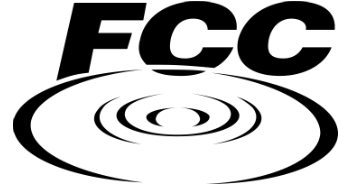The Federal Communications Commission this week provided more color on its plans to regulate the wireless industry, updating its controversial spectrum screen policy to include a greater amount of potential bands.
The FCC said it would include 40 megahertz of spectrum from the AWS-4 band and 10 megahertz from the H-Block, which are both grouped around the 2 GHz band and nearly all of which are controlled by Dish Network; 65 megahertz from the AWS-3 band in the 1.7/2.1 GHz band that is scheduled to be auctioned off later this year, with the FCC noting the inclusion would be based on the market-by-market availability of that spectrum; and 101 megahertz of spectrum from the broadband radio service and educational broadband service bands, which Sprint controls as much as 150 megahertz of in some markets.
Those spectrum bands would be included with the 700 MHz, 850 MHz, AWS-1 1.7/2.1 GHz and 1.9 GHz bands already included as part of the FCC’s spectrum screen process. The FCC is also set to include the 600 MHz spectrum band following those auction proceedings expected to begin in mid-2015. The exact amount of 600 MHz spectrum is still up in the air as television broadcasters will be returning those assets on a voluntary basis.
The FCC also reported that it would not include the 10 megahertz of D-Block, 700 MHz spectrum set aside for public safety in an attempt to lure partnerships between established operators and deployment plans for FirstNet.
The FCC last month laid out initial spectrum screen update rules, noting it would look more closely at mergers and acquisition involving spectrum holdings below 1 GHz as well as increase the spectrum bands included in the screening process. Those rules were tied to initial 600 MHz auction rules that will limit participation of some carriers and plans to not limit bidding in the AWS-3 auction.
Sprint had been lobbying the FCC to curb the inclusion of the 2.5 GHz spectrum band, arguing that those assets were far removed from the sub-1 GHz band and thus should not be treated in the same screening process. The FCC had previously counted just 55 megahertz in the 2.5 GHz band towards its screening process.
“We are disappointed … that in revising its spectrum screen the commission did not recognize the varying impact of commercial spectrum bands on broadband competition,” explained Lawrence Krevor, VP of spectrum, legal and government affairs at Sprint, in a statement last month. “As a result, the revised spectrum screen will not help the commission identify transactions that warrant a more detailed competitive analysis.”
While not expressly noted in the rules, the move does seem to put a substantial roadblock in front of a potential Sprint acquisition of T-Mobile US, which has been rumored for years and would combine the market’s No. 3 and No. 4 players. Reports surfaced last week that T-Mobile US parent company Deutsche Telekom had accepted an offer by Sprint owner Softbank for their respective subsidiaries to merge.
The FCC noted in its rules that any sort of change in the current market conditions “affecting the top four nationwide providers and their spectrum holdings” would result in the government agency reviewing its initial plans for reserved spectrum being set aside for the 600 MHz spectrum auction. The FCC noted that no more than 30 megahertz of spectrum will be set aside in all markets in a reserved manner for those participants holding less than one-third of spectrum in those markets below the 1 GHz level. That rule was most pointedly targeted at the likes of Verizon Wireless and AT&T Mobility, both of which control a lion’s share of the nation’ sub-1 GHz spectrum, and follows guidelines proposed by T-Mobile US last year as part of its “dynamic market rules” filing.
–The FCC this week also announced it would limit secondary market transactions related to the planned 600 MHz licenses for six years following conclusion of the auction.
The FCC had previously announced licensees would need to cover 40% of a license’s potential customer base within six years of receiving the license and 75% coverage by the end of 12-year initial license term. However, getting hands on those new licenses could take several years as the FCC ruled that broadcasters turning in their spectrum would have up to 39 months after the auction is complete to vacate those bands.
Make sure to keep up-to-date on policy news by visiting RCR Wireless News’s Policy page.
Bored? Why not follow me on Twitter?

Policy: FCC adds to spectrum screen; Sprint/T-Mobile US targeted
ABOUT AUTHOR
